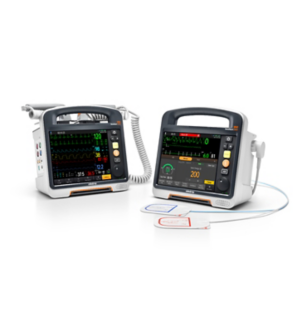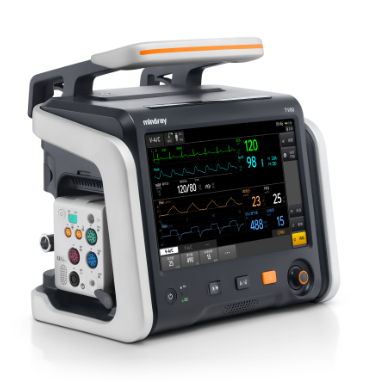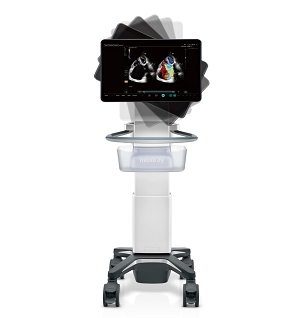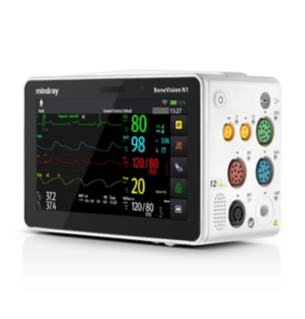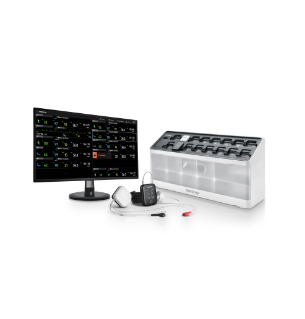Medical Technologies on the Move
2024-03-05
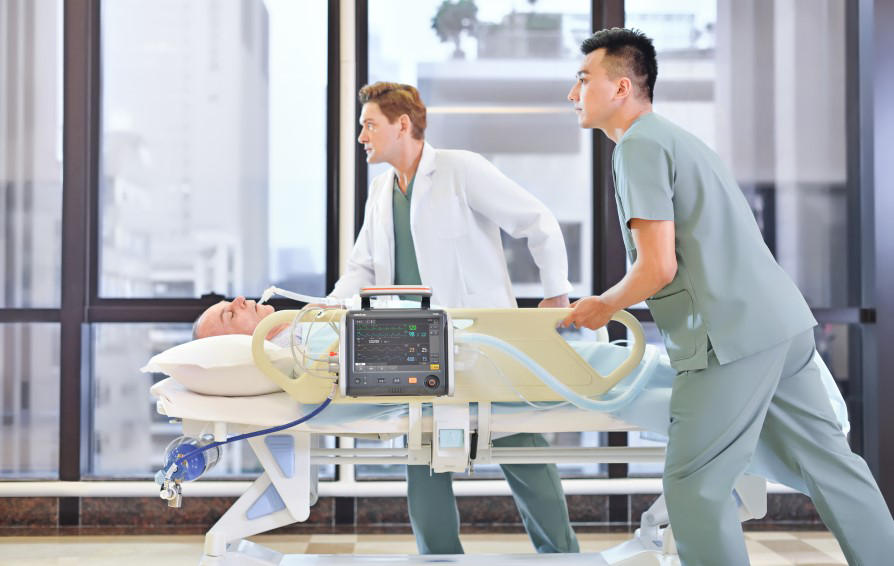
Streamlining patient journeys and expediting treatment can help reduce patient waiting lists and ensure care is delivered faster and right first time. The ability to remotely monitor patients from pre-hospital treatment through to home care settings and virtual wards gives clinicians the data they need to inform decision-making and diagnostics, and pick up on deterioration faster.
Rapid on-site diagnosis and treatment
When a patient suffering cardiac arrest isn’t responding to CPR, the combination of highly trained medical staff and efficient, effective equipment is crucial, especially for identifying hidden trauma. According to the Resuscitation Council UK, the annual incidence of in-hospital cardiac arrest is 1 to 1.5 per 1,000 hospital admissions. There are also more than 30,000 out-of-hospital cardiac arrest incidents every year with a survival rate of less than 1 in 10 [1]. Early CPR and defibrillation can more than double the chances of survival in some cases.
Patients arriving at an emergency department by ambulance should be transferred to the care of A&E staff within 15 minutes of arrival [2]. This, added to the already intense pressure on the provision of potentially life-saving care, means A&E staff need 100% confidence in the tools at their disposal.
In the face of unpredictable rescue, on-site diagnosis and analysis for patients speeds up treatment. The Mindray BeneHeart D60 defibrillator is the first of its kind to incorporate point-of-care ultrasound for accurate and confident decision-making. Its step-by-step identification tools, operation guides, and reference images guide the user through ultrasound to identify or rule out hidden trauma.

The model also offers professional 12-lead ECG analysis functions with intelligent assistance to help efficiently diagnose chest pain conditions and identify myocardial infarction locations, while a 6-channel recorder generates real-time ECG reports.
Diagnosis reports can be sent remotely to a target hospital with one click, allowing for advanced treatment planning for critically ill patients. Not only does the D60 come with Mindray’s patented QShock™ and filtered ECG analysis technologies for faster defibrillation, it also provides a comprehensive CPR evaluation system to monitor real-time CPR performance for hot and cold debriefing.
Structured debriefing protocols can automatically record and upload rescue data to help resuscitation teams refine their CPR techniques, as well as single and multiperson training modes that support hands-on CPR and defibrillator operation. All these technologies and features reflect Mindray’s brand-new ‘Rescue Triangle’ concept of all-round resuscitation quality improvement covering the whole clinical process from resuscitation to debriefing and training.
Safer transport
Critically ill patients often require intra-hospital transport for diagnostic and therapeutic treatments, but they face increased risks of adverse events, such as hypotension, desaturation, and dislodged peripheral lines. Reported adverse event rates range from 6% to as high as 70% [3]. High-quality ventilation support during the transfer process is crucial for stabilising critically ill patients and minimising adverse events, thus improving patient outcomes and enhancing the overall quality of care.
Ventilated patients that require transfer are usually connected to multiple devices, which can slow down transfer. Mindray has developed the TV80 transport ventilator to make transfer safer and smoother by integrating a ventilator, patient monitor and high-pressure oxygen cylinder into one device. Designed to meet the needs of diverse patient populations, from difficult airways to neonatal, it offers a new level of convenience, performance, and versatility.
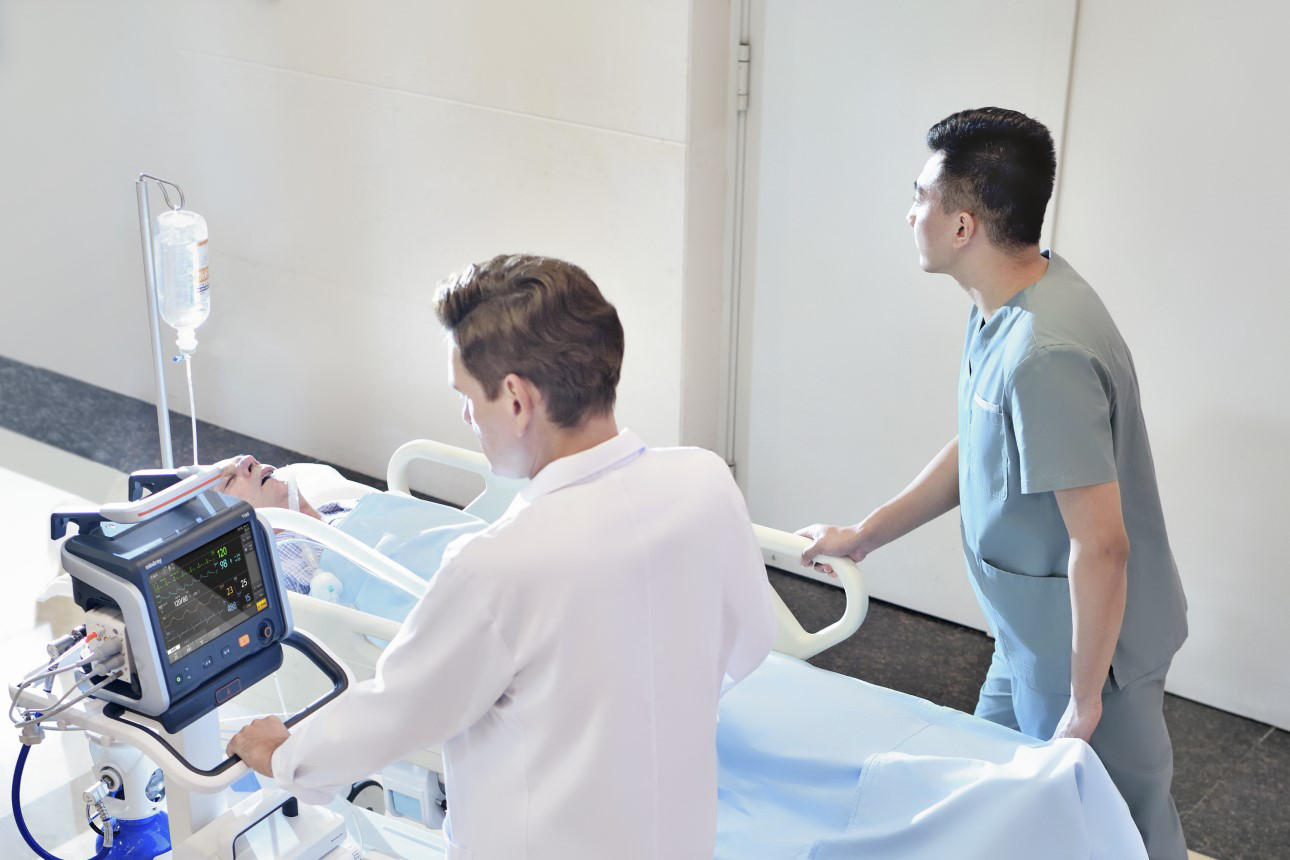
The TV80 is optimised for intra-hospital transport scenarios with its modular expandability and ICU-level ventilation, while also offering pre-hospital transport capabilities. It also simplifies patient transport with seamless data integration. In just one step, it connects and automatically synchronises bedside ventilation settings through the Mindray BeneVision N1 patient monitor without the need for cable reconnection. Vital signs are continuously monitored and recorded throughout the transport process, providing clinicians with realtime data on important patient vital signs via 5G, wifi or bluetooth connectivity.
To further optimise operation, the TV80 comes equipped with a non-consuming O2 sensor and real-time monitoring to eliminate zero oxygen sensor maintenance and calibration.
Point of care, reimagined
As ultrasound becomes much more prevalent in everyday medicine and demand for medical imaging grows, Mindray is making it easier for clinicians to use ultrasound by developing smart tools that can assist users with image acquisition, needle trajectory, assessments and diagnostic accuracy.
The TEX20 Series ultrasound system uses a technology called X-Link to integrate a patient’s physiological data and the ultrasound image on one screen. With integrated imaging and physiological information, clinicians get a brand-new view on a patient’s course of disease for timely and accurate diagnosis and treatment. It not only brings high-quality clinical value and accurate diagnosis to your daily practice, but also facilitates Multi-Disciplinary Treatment (MDT) and more advanced multi-modal clinical research.

A full suite of smart tools also provides clinicians with quick, precise assessment and guidance capabilities to face various challenges in point-of-care settings, including blocks for surgical procedures and cardiac assessments.
To make ultrasound even more portable, Mindray has also developed the TE Air, a wireless handheld ultrasound system. The pocket-sized system can charge on the go within its protective Air Capsule and be fully charged in just 35 minutes. Clinicians can choose for the high-quality scanning images to be sent directly to a TEX20 Series system or to their mobile devices through the TE Air app for ultimate convenience.
Continuous patient visibility
Data collection and device interoperability remains a significant focus to improve both efficiency and safety across healthcare. It’s crucial for helping the NHS increase patient turnover through the expansion of virtual wards and improving patient outcomes with closer monitoring of patient status.
Mindray has been expanding the capabilities of patient monitoring equipment so clinicians can conduct faster assessments, informed by more comprehensive and precise data sets whether they’re working at the bedside, central stations, or remotely.
Uninterrupted patient data can make a huge difference in treatment plans, especially for emergency interventions. The BeneVision N1 patient monitor can track a patient’s entire journey including intra and out of hospital journeys. When used as a transport monitor, data is stored ready for upload when reconnected to a wireless network or bedside monitor. Advanced parameters such as AG and BIS are stored in the N1 along with trend data and alarm events, which can be reviewed even when it is disconnected.
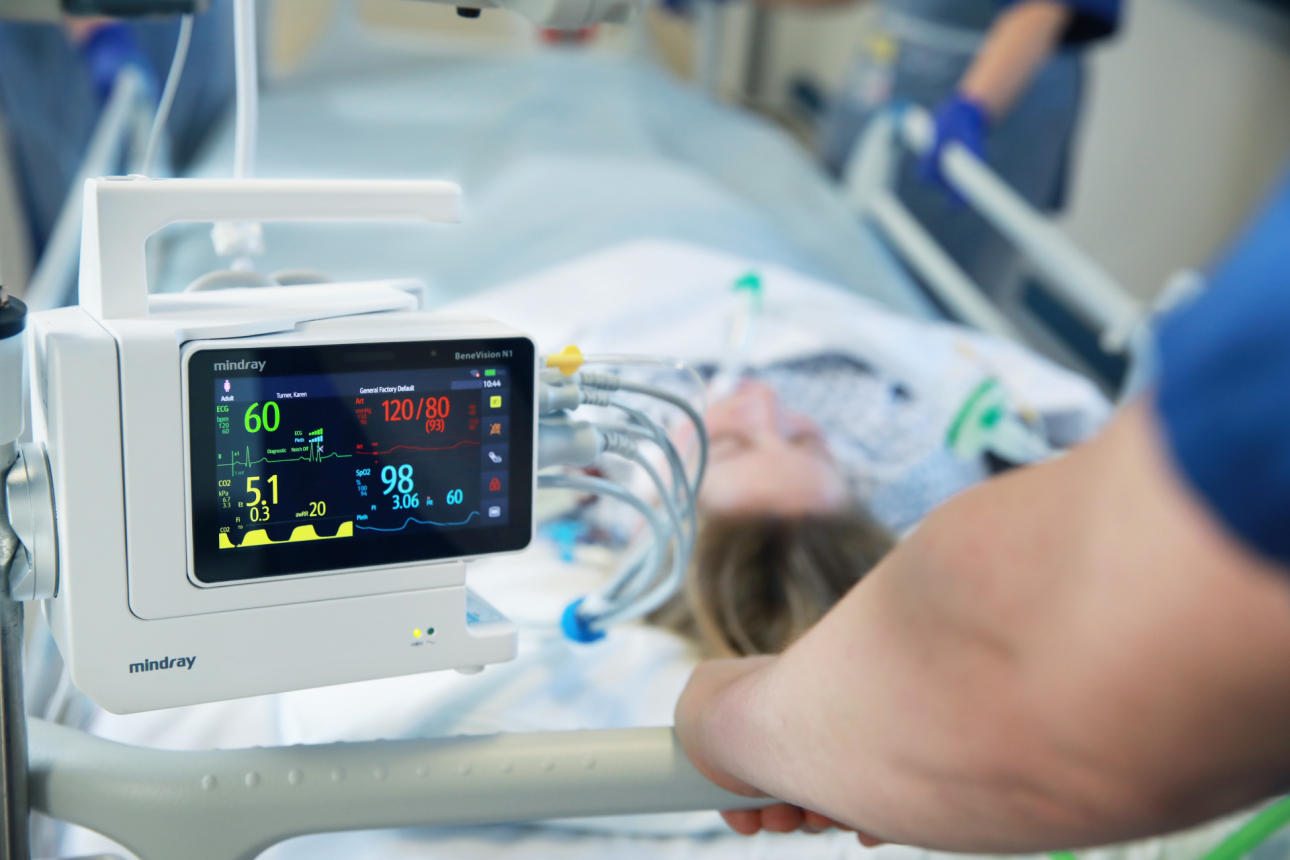
With beds and staff under increasing pressure, postoperative complications and detecting patient deterioration in general wards have become more challenging.
To support closer monitoring of ambulatory patients, Mindray’s mWear™ wearable patient monitor combines complete wireless interoperability with multi-parameter monitoring, streamlined workflows and seamless integration. It collects precise vital signs including ECG, oxygen saturation, non-invasive blood pressure, respiration rate, pulse rate, and temperature while allowing patients to move unencumbered whether they’re recovering at home or on the ward. Patented Anti-motion Algorithm minimises false alarms, and specialised health parameters, status indicators and time analysis capture patients’ physical activities and sleep to assist recovery status evaluations. With the highlights of vital sign changes, auto-triggered emergency mode and alarm escalations, clinicians can effectively identify early signs of deterioration and offer timely interventions.
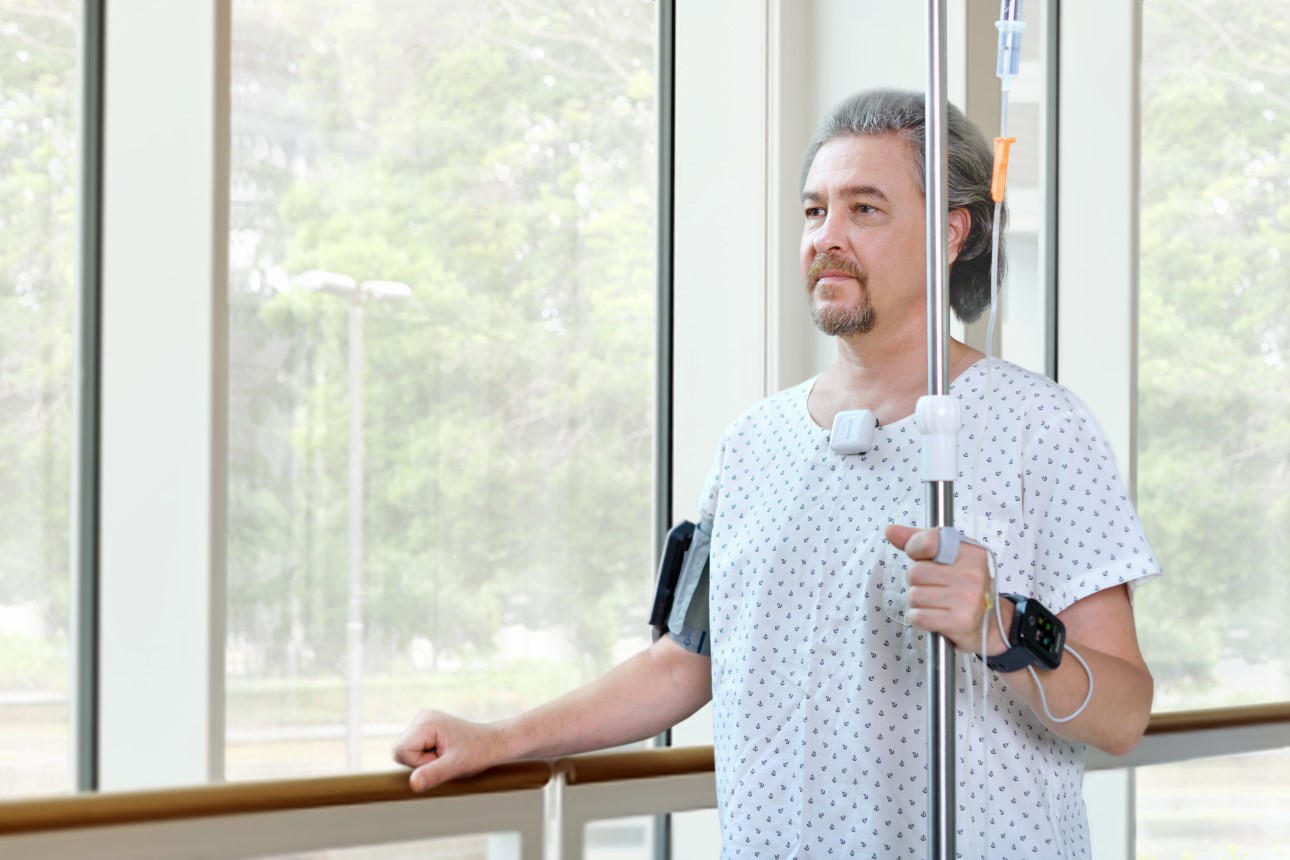
What’s next?
Digital capabilities are constantly evolving, creating new possibilities for clinicians to improve treatment and patient outcomes. To ensure healthcare providers can take full advantage, Mindray invests 10% of all revenue into research and development to continuously advance medical technologies. All product development is informed by customer insight to ensure the most pressing needs of healthcare professionals are addressed to improve patient outcomes.
References
[1]. Resuscitation Council UK, Epidemiology of cardiac arrest - Guidelines, 2021 https://www.resus.org.uk/library/2021-resuscitation-guidelines/epidemiology-cardiac-arrest-guidelines
[2]. NHS Standard Contract Particulars – full length, Schedule 4 – Quality Requirements, page 50, point E.D.S.7a,: https://www.england.nhs.uk/publication/nhs-standard-contract-particulars-full-length/
[3]. Venkategowda PM, Rao SM, Mutkule DP, Taggu AN. Unexpected events occurring during the intra-hospital transport of critically ill ICU patients. Indian J Crit Care Med 2014; 18(6): 354-7.
As featured in Clinical Services Journal, February 2024.
